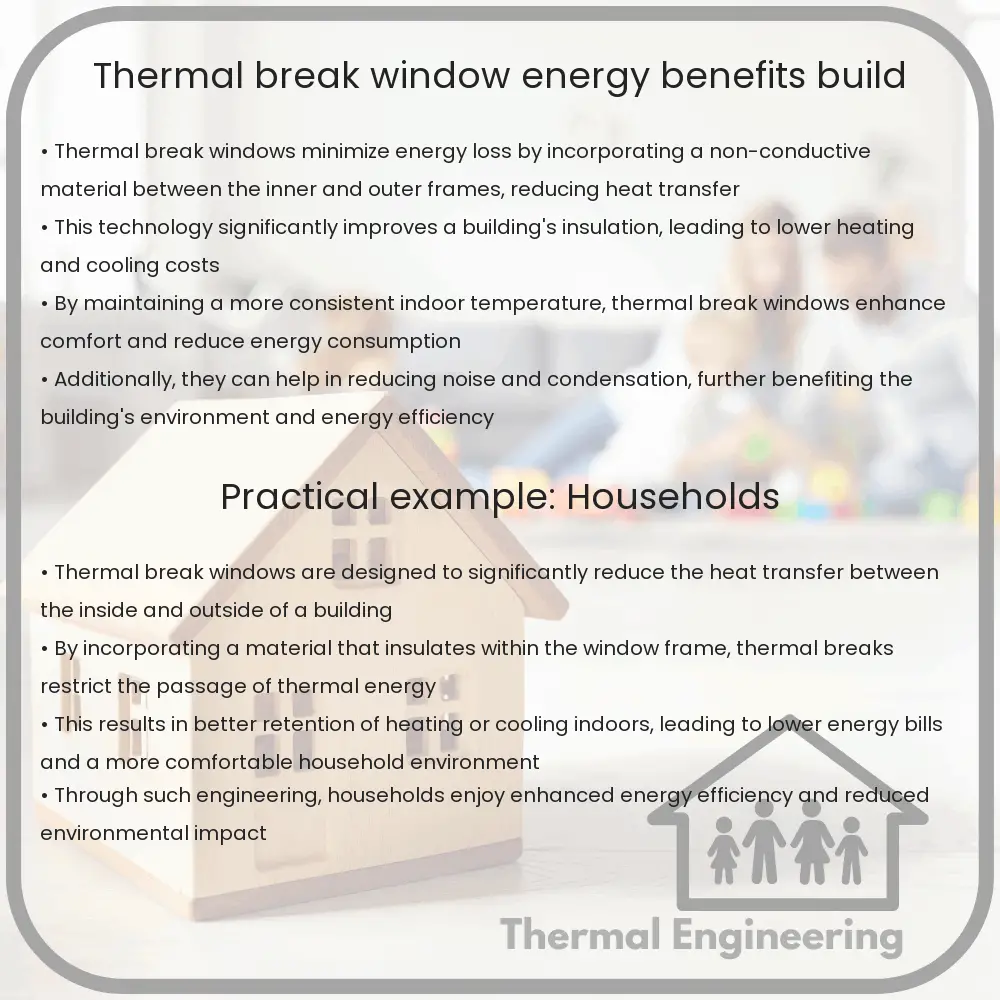Learn about thermal break windows, their components, and the energy benefits they offer for efficient heating and cooling.

Understanding Thermal Break Windows
Thermal break windows are an innovative type of energy-efficient window that incorporates a separator between the interior and exterior window frames made from a less conductive material. This design is crucial for minimizing the transfer of heat and cold across the window frame, offering improved insulation and significant energy benefits.
Components of a Thermal Break Window
A thermal break window typically consists of an internal and external metal frame, which are separated by a non-metallic polymer or resin. This separator is the “thermal break” and is vital in reducing thermal conductivity. The most common materials used for the frames include aluminum, which is preferred for its strength, lightness, and durability, though it is highly conductive. The thermal break disrupts this conductivity.
- Frames: Often made of aluminum, reinforced with a polyamide or polyurethane barrier.
- Glazing: Usually double or triple-glazed units are used, containing inert gas between the panes, like argon or krypton, to further reduce heat transfer.
- Seals: High-quality seals are essential to prevent air leaks and ensure effective insulation.
Energy Benefits of Thermal Break Windows
Thermal break windows provide several energy-related benefits that contribute to both environmental sustainability and cost efficiency:
- Improved Insulation: By interrupting the path for heat transfer, thermal break windows maintain a more consistent indoor temperature, which is crucial for reducing the reliance on heating and cooling systems.
- Reduced Energy Consumption: With a more stable indoor climate, less energy is required to heat or cool the space, leading to lower energy bills and conservation of resources.
- Decreased Condensation: The improved insulation also means that the inner window surface is less likely to reach dew point temperatures that cause condensation, thereby reducing the potential for moisture-related issues.
Building Considerations for Thermal Break Windows
While thermal break windows are advantageous, there are several key considerations during the building or retrofitting process:
- Cost: The initial investment for thermal break windows can be higher than standard windows. However, the reduction in energy costs can offset this over time.
- Installation: Proper installation is crucial to ensure that the full benefits are realized. Poor installation can lead to air leaks and diminished performance.
- Maintenance: Although minimal, regular maintenance such as checking seals and the integrity of the glazing is critical to maintain performance over time.
- Adaptation to Climates: Thermal break windows are especially beneficial in extreme climates where the difference between indoor and outdoor temperatures is significant.
Conclusion
Thermal break windows offer a compelling solution for enhancing energy efficiency in buildings. By effectively reducing thermal bridging and enhancing the overall insulative properties of the window, they contribute to a sustainable future while providing cost savings in the long term. As technology in materials and design continues to advance, the adoption of thermal break windows is likely to grow, marking a significant step towards more energy-efficient building practices.